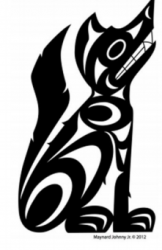Link 1 –
Kylie Neiser’s experience and perspective in this speech to text task had a few distinct differences from mine. For starters, her use of a different application, (she used Otter while I used speechnotes) allowed for more precision in voice recognition. She stated how surprised she was in its ability to pick up self-corrections. We both, however, had examples of the flaws in speech to text technology. Another difference between our experiences was the way we approached filler words. While she was cognizant of her “umms and ahhs” after the fact, I was preemptively trying to avoid them. From my own personal experiences of being on microphones and in front of cameras,I have become hyper aware of being recorded and automatically slowed down my speech to avoid the fillers. The final distinctive difference between our reflections is in how we viewed the power of oral vs written storytelling. Kylie discussed losing interest in written story telling more quickly than oral storytelling because of the passion and inflections afforded in spoken language. I on the other hand, discussed on the convenience that oral storytelling has over written stories and the assumptions about the conventions of spelling and grammar are implicitly placed in oral language. Written language requires flawless conventions for a smooth content consumption experience.
Link 2-
Reading over Victoria Ramsey’s reflection of potato printing was a nice refresher over the module in which we explored the history of printed text. The assignment of choosing between potato printing and hand written scribe seemed to be rooted in a constructivist approach in learning as we built our own knowledge about the topic based on experience. Victoria’s potato stamp reflection led her to appreciate the initial laborious efforts of content authoring in mass printing technologies. Eventually “that labour goes away completely and one can use these technologies with minimal effort”. The end-user interface of mass printing technology was represented in her experience of using her potato stamp. I, on the other hand, chose the scribe experience, which led me to discuss the challenges of writing by hand that I had forgotten since the invention of the keyboard. I agree with Victoria’s reference to the podcast that “writing by hand” is excessive drudgery. While there is more agency in the content-authoring in the handwritten experience, the end-user interface of this experience will never change. Given that I only had to write 500 words, the amount of time spent of on this assignment was roughly the same (30 minutes). However, if we were assigned to create 20,000 words, Victoria’s stamp would run circles around my pen. Comparing our assignment experiences really resembles and constructs a better understanding of the meaning of “opening of the floodgates”in the context of shifting from handwriting to moveable print technology.
Link 3 –
Saniya Uraizee’s approach and comprehensive breakdown of her Golden Record choices was quite different from my experience. The operant words that set our paths to two different directions were diversity and intimidation. For Saniya, by choosing to seek records that represented earth’s diversity allowed her to look for a variety of soundscapes within the various records she chose. Architecturally, she depicted the diversity of her records by using a colour coded scheme to identify instruments and voices. She was able to streamline her communication in this method and discuss how each song offered something different within this context.
My operant word was intimidation. I chose songs based on representing Earth as an intimidating planet that extraterrestrials would think twice about before invading us. I simply looked for louder, sharper and intense noises within each record. I don’t think I would be able to apply the same architectural tools of colour coding voice and instruments similar to what Saniya did. It is difficult to use words to describe the intensity of sound. However, I think I could have discussed each song’s BPM rate as well as identified certain noises that contributed to why they were in the category of intimidating.
Link 4 –
I chose to compare my mode bending experience to Charles Currie’s because we both took a similar approach of using recorded audio to allow the audience to decipher what was in our bag. The main difference was that Charles’ experience spanned over the journey of his entire day whereas mine was concentrated into a sit down short experience. We both had to be deliberate, but deliberate in different ways. Charle’s had been deliberately mindful of of the recordable moments throughout his day. Charles was seeking naturally occurring daily noises that would fit into his soundscape in order to paint a picture of the contents of his bag. I, on the other hand, had to be deliberate in creating the sounds from the content of my bag in order to paint a similar picture. It is amazing that two people using the same authoring tool with similar end goals can have such different user experiences.
Link 5 –
In the Twine task, we all used the same content authoring tool. However, I wanted to compare my Twine story with every single Twine in order to evaluate the theoretical underpinning of this course that new writing technology does not necessarily usurp the old. “If the past is any indication, it would seem the arrival of the computer age is not likely to precipitate, as critics like Sven Birkerts (1994, p. 31) would have us believe, “a kind of species mutation.” We are undergoing a revolution in writing communication technology as code language has entered the ecosystem of written communication. The way coding has mutated the species that is writing is unfolding before our very eyes. I think the Twine task we were assigned is an excellent example of such a mutation. The coding and game aspect that Twine provided naturally shifted the way we wrote and created our stories. I, personally, had never been able to create a story that allows the audience to have agency in how the story goes. It actually reminded me of an immersive theatre experience I had in New York when I attended “Sleep No More”. This was a contemporary version of Macbeth where actors tell a story through dance that takes place throughout a 5 floor hotel. They interact with other characters and audience members.I wore a mask and was asked not to speak or touch any actors. Everything else was up to me in terms of which character I followed and where I went. I was actually grabbed by an actor and taken into a dark room where he force fed me the antidote (gummy bear) to a disease and he screamed that there was hope for me “to escape from this hell”. The entire experience was incredibly intense and unlike any other I’ve had before. It made me think about the play writes and how they had to shift the symbolic DNA of such a play in ways that had never been before to account for audience agency. In relation to my Twine experience, I felt that it must have been a similar shift and I think it was the same for everyone else. I felt that for each Twine task, the coding aspect that allowed for audience changed the way we would all normally write, but in very different ways.
Link 6-
I really enjoyed Jess’ O Hanley’s approach of “Predictive Poetry”. Allowing the predictive text to have control over where the message would go was an interesting way of exploring this assignment. I would have loved to have seen the reactions from her friends. I took on a different approach where I created a microblog on twitter and explored how the predictive algorithm affected the selected hashtag. In a way, our content-authoring tool was very different yet our reflection ended up in similar realms. Jess questioned the “little guy” in our phone and the power of surveillance increasing beyond comfortable parameters. I, on the other hand, questioned predictive algorithms and their influence on our thought patterns and free speech.

